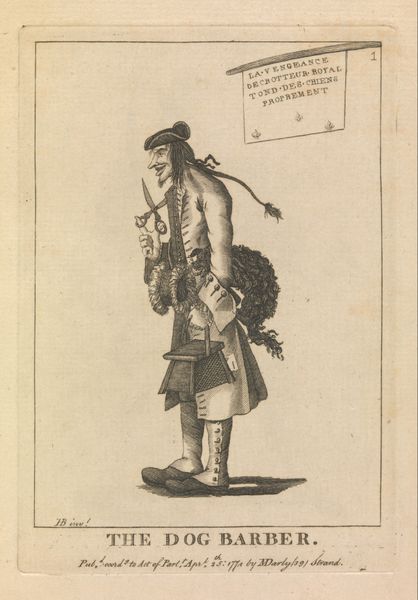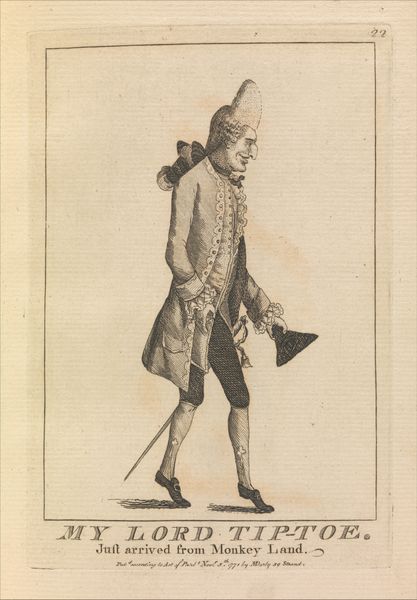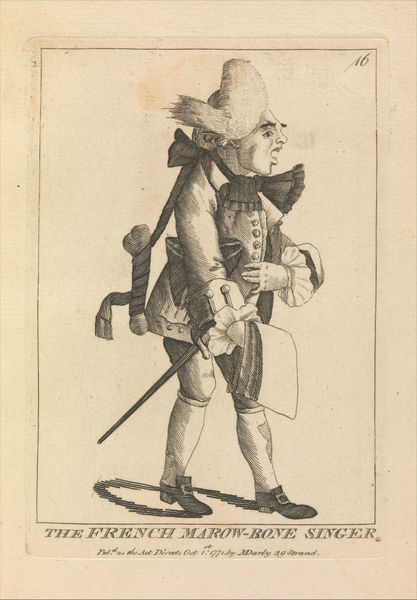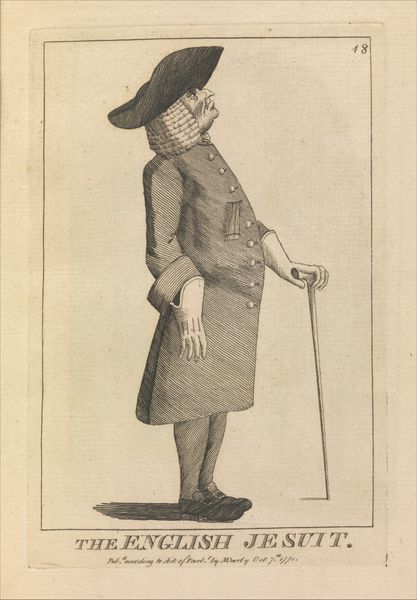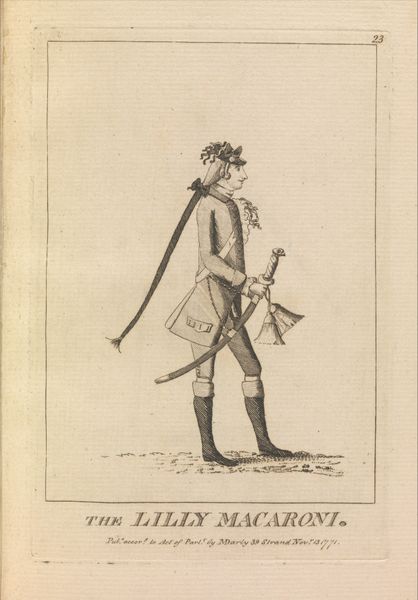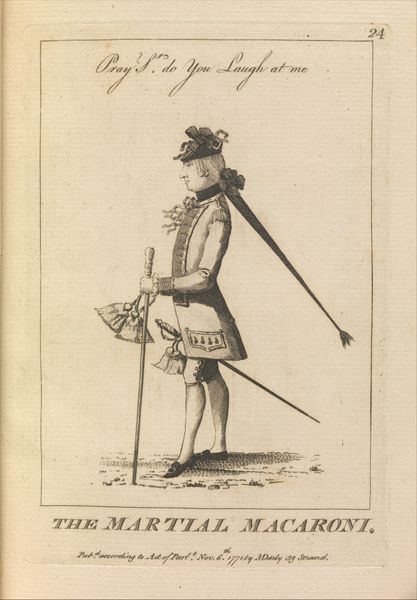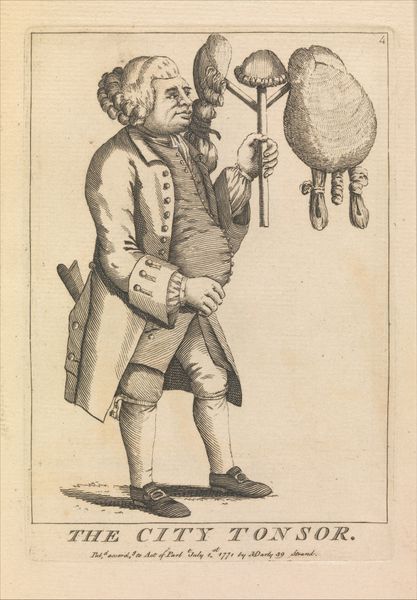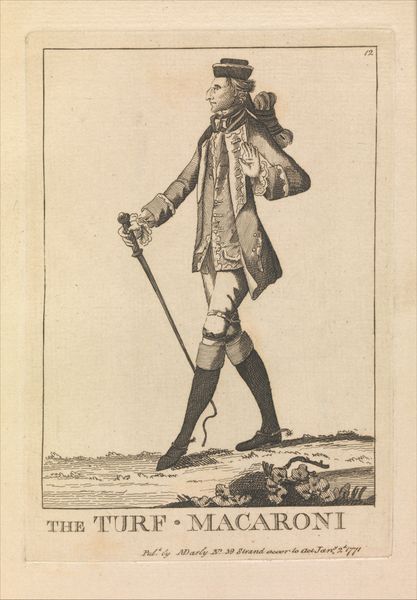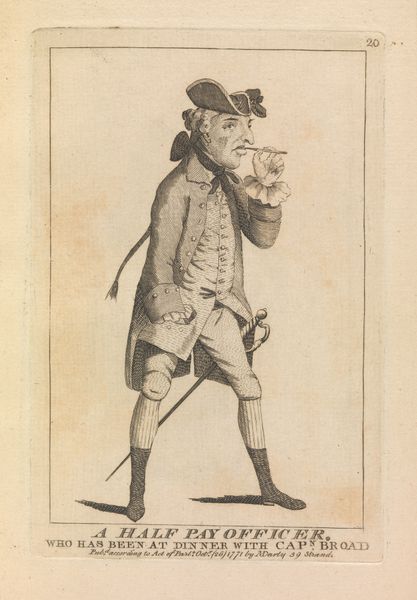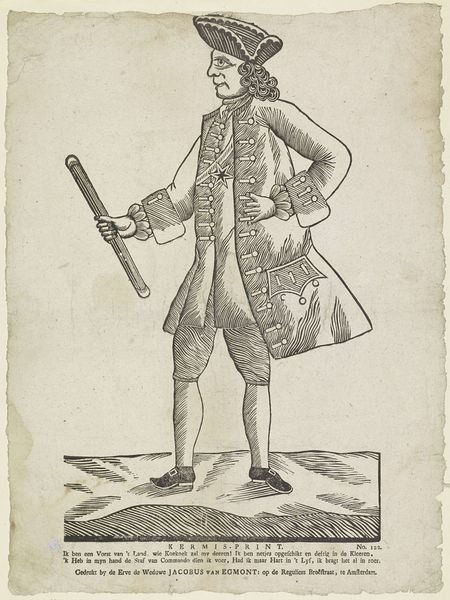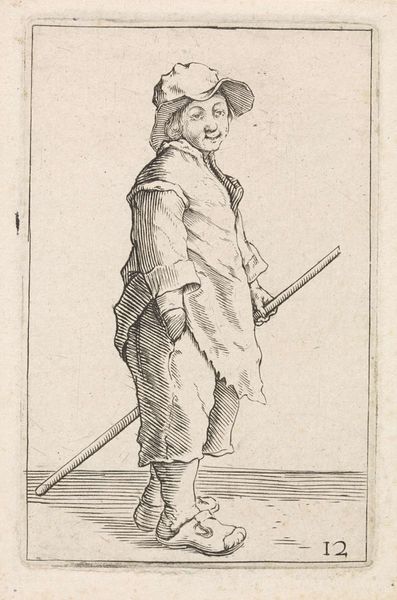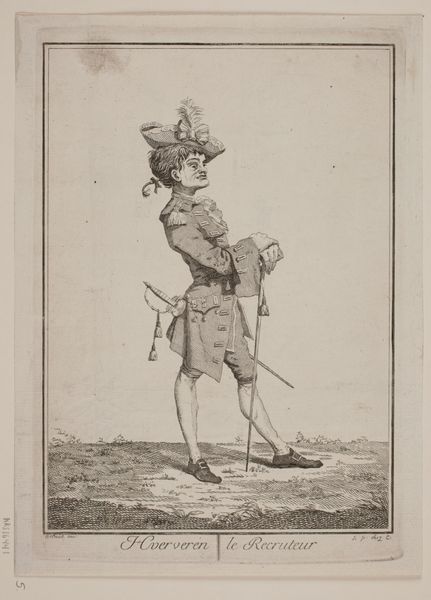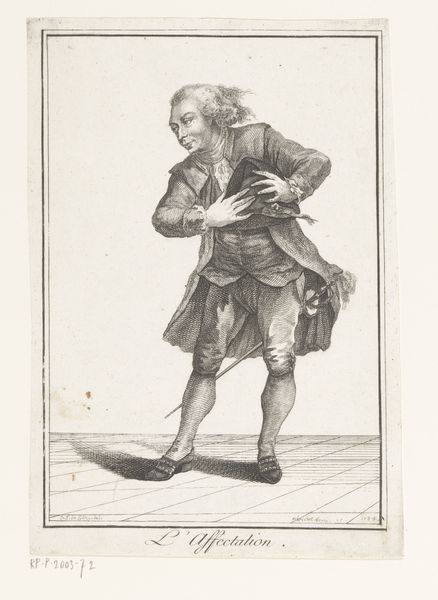
Dimensions: plate: 6 x 4 3/16 in. (15.3 x 10.7 cm) sheet: 8 13/16 x 5 7/16 in. (22.4 x 13.8 cm)
Copyright: Public Domain
Matthew Darly made this etching, Ganymede, sometime in the 1770s. This kind of printmaking relies on acid to bite lines into a metal plate. The plate is then inked and used to make impressions on paper. The crispness of the lines in Darly’s etching allows for fine details, and the mechanical print process meant that many impressions could be made from a single plate. This capacity for reproduction suited the printmaker, as the prints could be sold in larger quantities for profit. Ganymede shows a macaroni, a flamboyant and androgynous figure, known in the 1770s. The etching process democratized image-making, and fueled visual cultures that crossed boundaries of class. Darly's work sits at the intersection of art, commerce, and social commentary. By focusing on the material and the making, we can better understand the diverse context in which artworks are created and consumed.
Comments
No comments
Be the first to comment and join the conversation on the ultimate creative platform.
